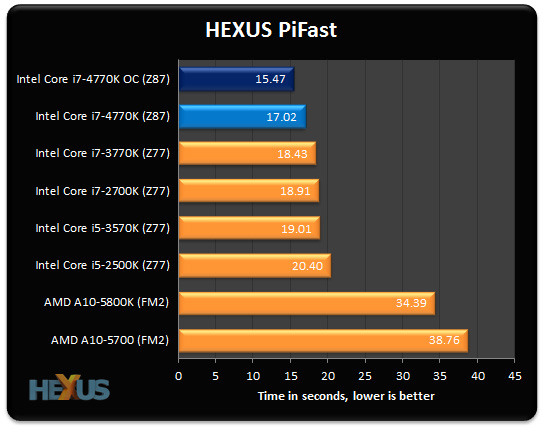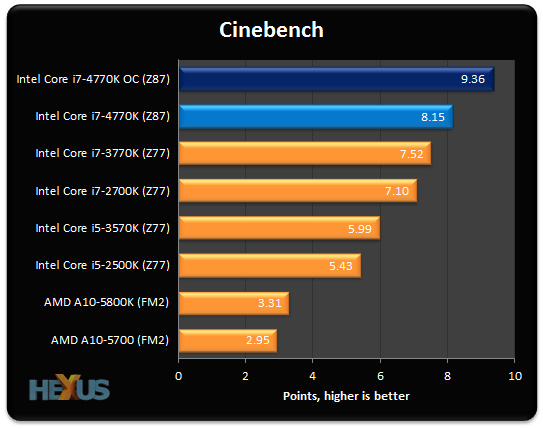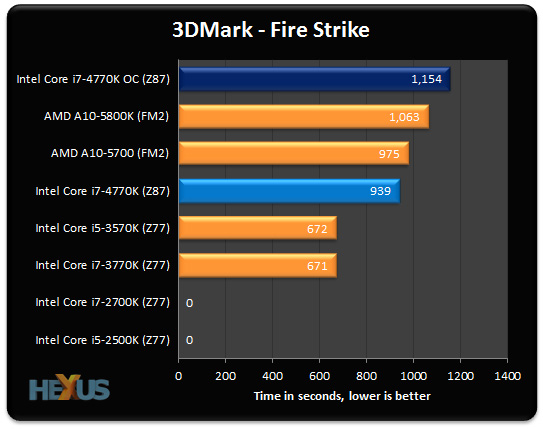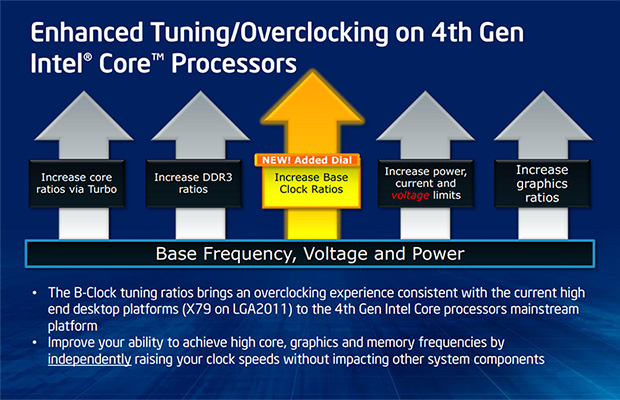Overclocking
Efficiency and overclocking don't tend to go hand in hand, yet, in an effort to satiate the needs of overclockers, Intel has borrowed from the X79 platform and reintroduced base clock ratios.
What this means is that, like Sandy Bridge Extreme, Haswell processors will run at a choice of three base clocks: 100MHz, 125MHz and 166MHz, with a bit of extra wiggle room thrown in. And yes, this applies to all desktop Haswell parts, be it multiplier unlocked or not. That means that you should be able to overclock every Haswell chip - even a mid-range Core i5-4570 might run at 4GHz, provided it's stable when the default 32x multiplier is partnered to a 125MHz base clock.
Of course, the premium multiplier-unlocked parts offer extra incentive. Intel allows an 80x multiplier at 100MHz, up to 64x at 125MHz and up to 48x at 166MHz. There are various ways of getting to 8GHz, but while neither Sandy Bridge nor Ivy Bridge offered such flexibility, your mileage will vary.
In our own experience, and in discussion with various system integrators, we have found that early Haswell samples don't take kindly to being pushed outside of their comfort zone. Based on our limited hands-on time, Haswell may be more flexible, but previous-generation parts proved more stable at higher speeds.
Our Core i7-4770K would kick up a fuss if we pushed the multiplier past 37x, yet the chip could clearly run faster as we were able to reach 4.38GHz by marrying the default 35x multiplier to a 125MHz base clock. Going any higher, on either the base clock or multiplier, introduced system instability. We were, however, also able to quite easily bump up the HD 4600 IGP by a further 32 per cent, taking it from 1,250MHz to 1,650MHz.

Ramping the CPU clock speed up to 4.38GHz has a nice enough impact on the PiFast result.

The overclock is applied across all cores, enabling a 15 per cent boost in multi-threaded Cinebench performance.

There's a good amount of headroom on the HD 4600 IGP, where the increase in frequency - which, remember, isn't guaranteed - translates to a 23 per cent increase in performance.










